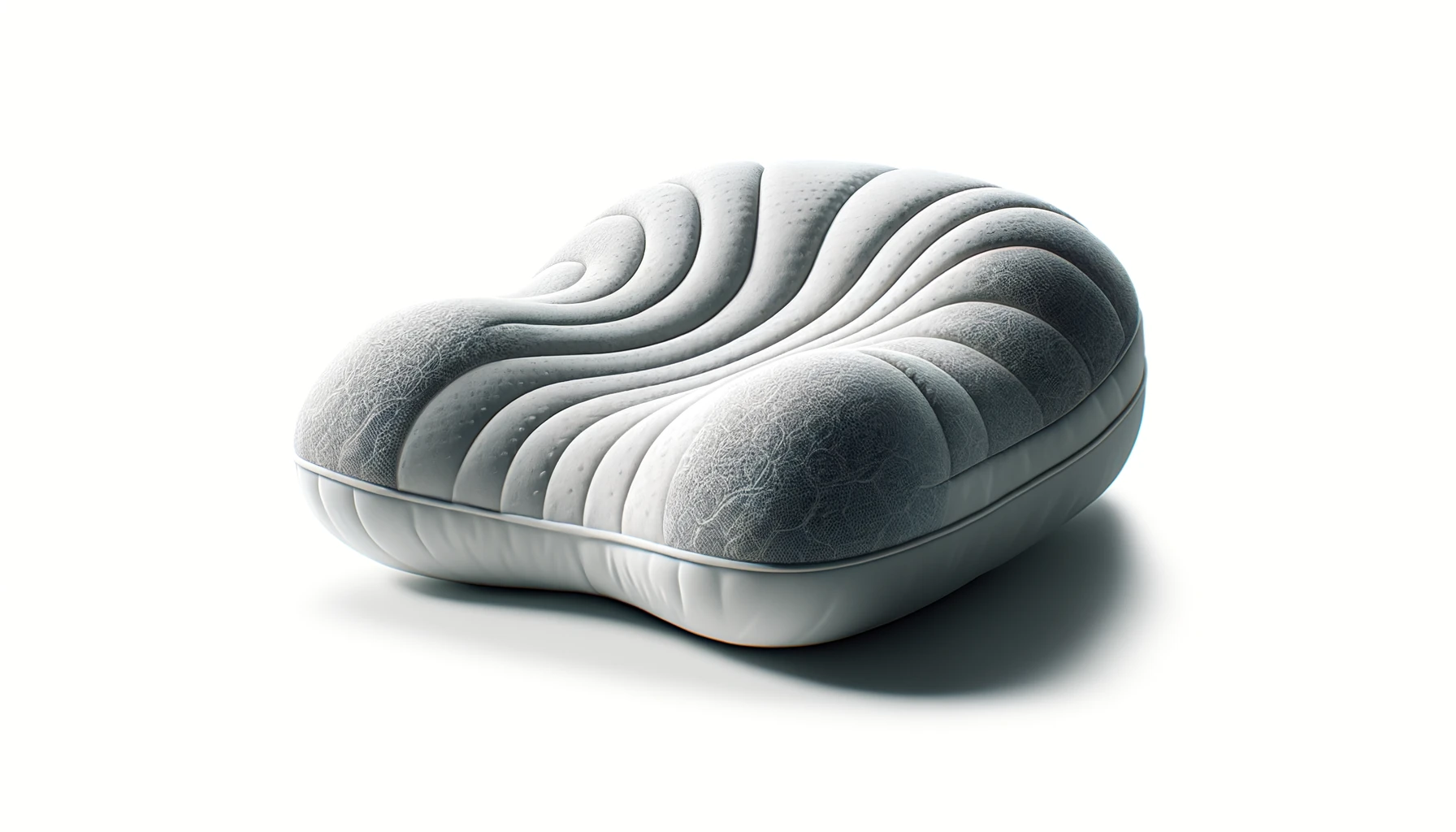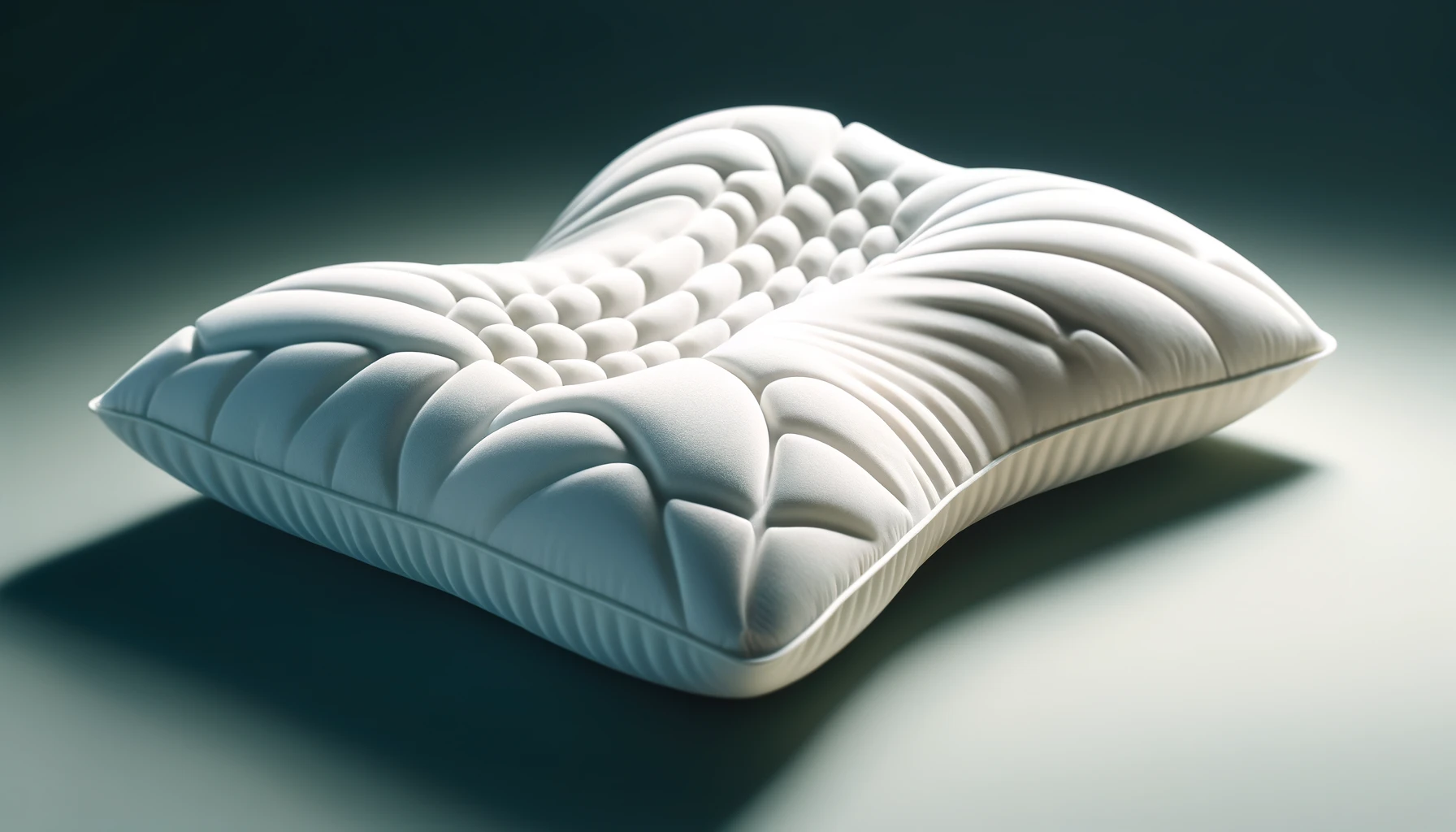Understanding Orthopedic Pillows for Healthy Sleep
In the quest for a good night's sleep, many people overlook the importance of proper neck and spine alignment. This is where orthopedic pillows come into play, offering a solution to support your body in a way that promotes healthy sleep patterns and overall well-being.
Exploring the Benefits of Orthopedic Pillows
Orthopedic pillows are specially designed to provide support and alignment for the neck and spine while you sleep. Unlike traditional pillows, which may lose shape and support over time, orthopedic pillows are crafted with specific features and materials to maintain their form and function night after night.
One of the key benefits of orthopedic pillows is their ability to alleviate pressure points and reduce strain on the neck and spine. By cradling your head and neck in the proper position, these pillows help distribute weight evenly and prevent excessive bending or twisting of the spine, which can lead to discomfort and pain.
Types of Orthopedic Pillows
There are several types of orthopedic pillows available, each designed to address specific sleep needs and preferences:
Contour Pillows: These pillows feature a contoured design that conforms to the natural curves of the head and neck, providing optimal support and alignment.
Lumbar Pillows: Lumbar pillows are designed to support the lower back while sitting or lying down, promoting proper posture and reducing strain on the spine.
Body Pillows: Body pillows are elongated pillows that can be hugged or positioned between the legs to provide full-body support and alignment.
Neck Pillows: Neck pillows are contoured to support the cervical spine and promote proper neck alignment, reducing strain and tension during sleep.
Each type of orthopedic pillow offers unique benefits, so it's essential to choose the right one based on your sleep habits and comfort preferences.
Selecting the Right Orthopedic Pillow
When choosing an orthopedic pillow, there are several factors to consider to ensure you find the perfect fit for your needs:
Material: Orthopedic pillows are typically made from memory foam, latex, or gel-filled materials, each offering different levels of support and comfort.
Shape: Consider the shape of the pillow and how it aligns with your sleeping position. Side sleepers may benefit from a thicker, more supportive pillow, while back sleepers may prefer a flatter, more contoured design.
Size: Choose a pillow size that matches the dimensions of your bed and provides adequate support for your head and neck without feeling too bulky or restrictive.
Choosing the Perfect Orthopedic Pillow
Selecting the right orthopedic pillow is crucial for ensuring optimal comfort and support during sleep. With various types and features available, understanding key considerations will help you make an informed decision that aligns with your individual sleep needs.
Factors to Consider When Choosing an Orthopedic Pillow
Sleeping Position: Your preferred sleeping position plays a significant role in determining the type of orthopedic pillow that will best suit your needs. For example, side sleepers may benefit from a firmer and higher loft pillow to keep the spine aligned, while back sleepers may find a thinner pillow more comfortable.
Material: Orthopedic pillows are commonly made from memory foam, latex, or gel-filled materials, each offering unique benefits. Memory foam molds to the shape of your head and neck, providing personalized support, while latex offers a more resilient and breathable option. Gel-filled pillows provide cooling properties, making them ideal for hot sleepers.
Contour and Shape: Consider the contour and shape of the pillow, ensuring it aligns with the natural curvature of your head and neck. Contour pillows are designed to cradle the head and neck, promoting proper alignment and reducing pressure points. Additionally, some orthopedic pillows feature ergonomic designs tailored to specific sleep positions.
Size and Loft: The size and loft of the pillow refer to its height and thickness. It's essential to choose a pillow size and loft that provide adequate support without causing strain on the neck or shoulders. Adjustable pillows allow you to customize the loft to suit your preferences, while standard sizes cater to various sleep needs.
Customizing Your Sleep Experience
Many orthopedic pillows offer customization options to tailor your sleep experience to your specific needs:
Adjustable Loft: Some pillows feature removable inserts or layers, allowing you to adjust the loft and firmness to your liking.
Temperature Regulation: Look for pillows with cooling gel or ventilated designs to prevent overheating and promote a comfortable sleep environment.
Hypoallergenic Materials: If you have allergies or sensitivities, opt for orthopedic pillows made from hypoallergenic materials to reduce the risk of irritation and promote cleaner air quality.
Consulting with a Healthcare Professional
For individuals with chronic pain or orthopedic conditions, consulting with a healthcare professional or physical therapist can provide valuable guidance in selecting the right orthopedic pillow. They can offer personalized recommendations based on your specific needs and help address any underlying issues contributing to sleep discomfort.
Maximizing the Benefits of Orthopedic Pillows for Healthy Sleep
Now that you've chosen the perfect orthopedic pillow, it's time to reap the rewards of improved sleep quality and overall well-being. In this section, we'll explore the various benefits of orthopedic pillows and provide tips for maximizing their effectiveness in promoting healthy sleep patterns.
Relief from Neck Pain and Discomfort
Orthopedic pillows are specifically designed to provide support and alignment for the neck and spine, helping alleviate neck pain and discomfort. By maintaining proper alignment while you sleep, these pillows reduce strain on the muscles and ligaments of the neck, allowing for more restful and rejuvenating sleep.

Improved Spinal Alignment
Proper spinal alignment is essential for overall spinal health and posture. Orthopedic pillows help keep the spine in a neutral position, reducing the risk of misalignment and related issues such as back pain and stiffness. Whether you're a side sleeper, back sleeper, or stomach sleeper, choosing the right orthopedic pillow can help ensure your spine stays properly aligned throughout the night.
Enhanced Comfort and Sleep Quality
The superior support and cushioning provided by orthopedic pillows contribute to enhanced comfort and sleep quality. By reducing pressure points and distributing weight evenly, these pillows create a more comfortable sleep surface, allowing you to drift off more quickly and stay asleep longer. Plus, the ergonomic designs of orthopedic pillows promote better airflow and temperature regulation, helping you stay cool and comfortable throughout the night.
Tips for Maximizing Sleep Quality with Orthopedic Pillows
Maintain Proper Pillow Placement: Position your orthopedic pillow so that it supports the natural curvature of your neck and spine. Avoid propping your head up too high or letting it sink too low, as this can lead to strain and discomfort.
Use Additional Supportive Pillows: Depending on your sleep position and preferences, you may benefit from using additional supportive pillows, such as lumbar pillows or knee pillows, to further enhance comfort and alignment.
Rotate and Fluff Your Pillow Regularly: To maintain optimal support and longevity, rotate and fluff your orthopedic pillow regularly to prevent it from becoming flattened or misshapen over time.
Practice Good Sleep Hygiene: In addition to using an orthopedic pillow, incorporate good sleep hygiene practices into your bedtime routine, such as establishing a consistent sleep schedule, creating a relaxing sleep environment, and avoiding stimulating activities before bed.
Monitor Your Sleep Quality: Pay attention to how your body responds to your orthopedic pillow and make adjustments as needed. If you experience persistent discomfort or sleep disturbances, consult with a healthcare professional to address any underlying issues.
Incorporating an orthopedic pillow into your sleep routine can lead to significant improvements in sleep quality and overall well-being. By choosing the right pillow and implementing these tips for maximizing its effectiveness, you can enjoy the benefits of healthy sleep and wake up feeling refreshed and rejuvenated each day.
More articles
The Ultimate Guide to Orthopedic Care: Everything You Need to Know
Orthopedic care is a specialized field of medicine that focuses on the diagnosis, treatment, and prevention of disorders related to the musculoskeletal system. This includes bones, joints, muscles, li
Read moreLocation Tracking Apps in Orthopedic Care: Main Questions
Discover how real-time location tracking apps are revolutionizing orthopedic care, enhancing patient safety, facilitating remote monitoring, and driving innovation in research and development. Learn m
Read moreOrthopedic Care Excellence: Optimal Outcomes & Key Factors for Success
Discover how to achieve optimal orthopedic outcomes with a focus on early diagnosis, patient-centered care, advanced technology, and comprehensive rehabilitation. Learn about the key factors and innov
Read more
